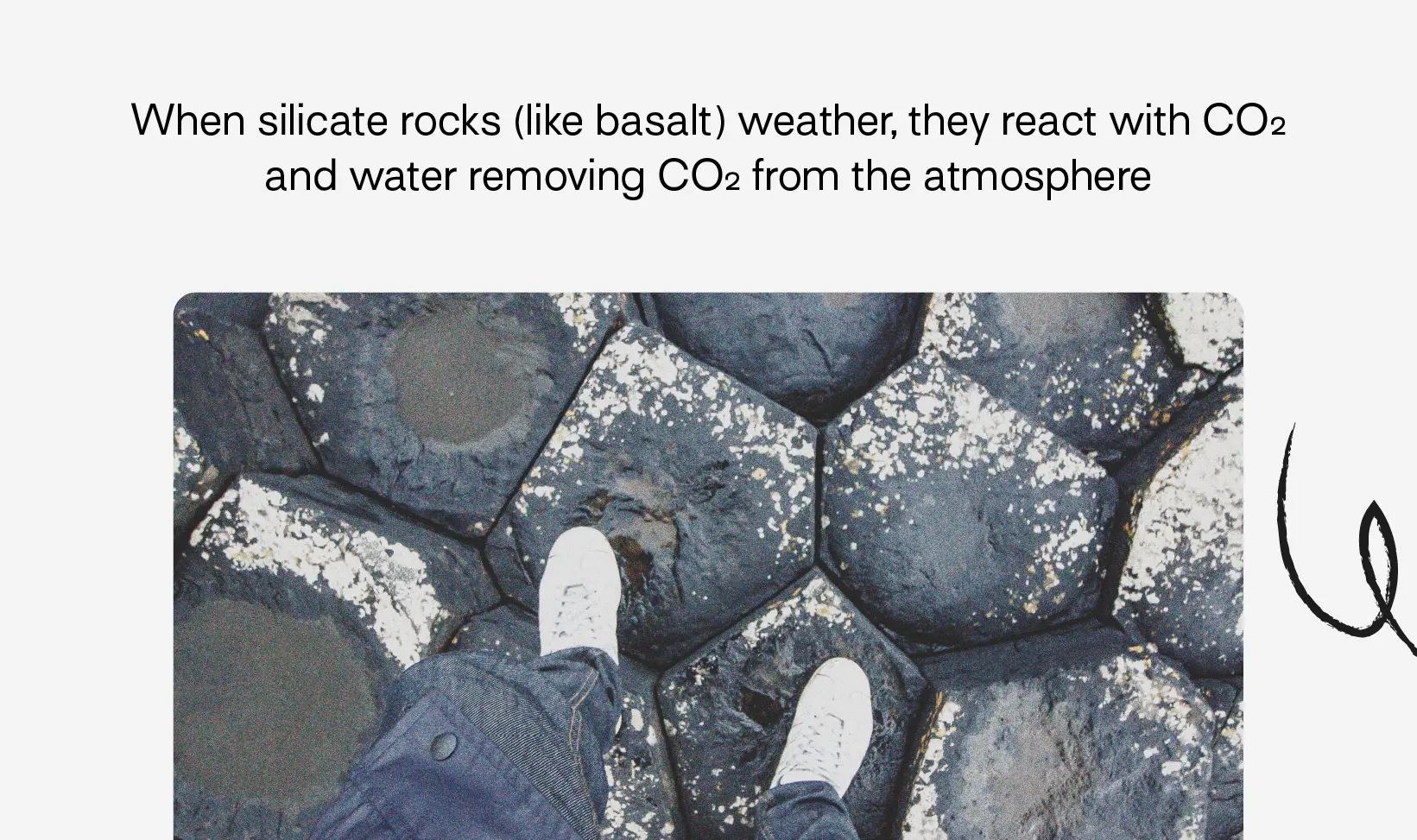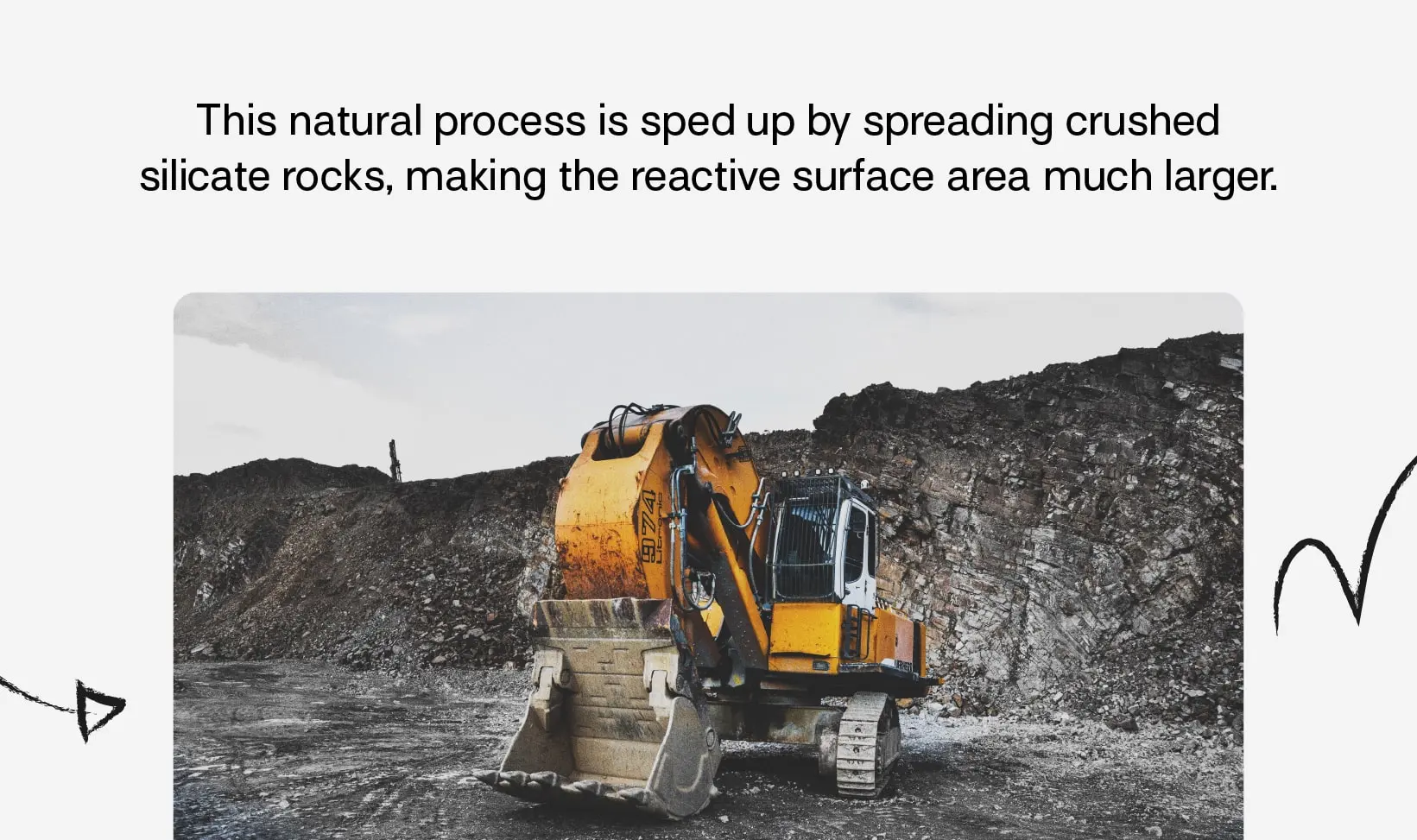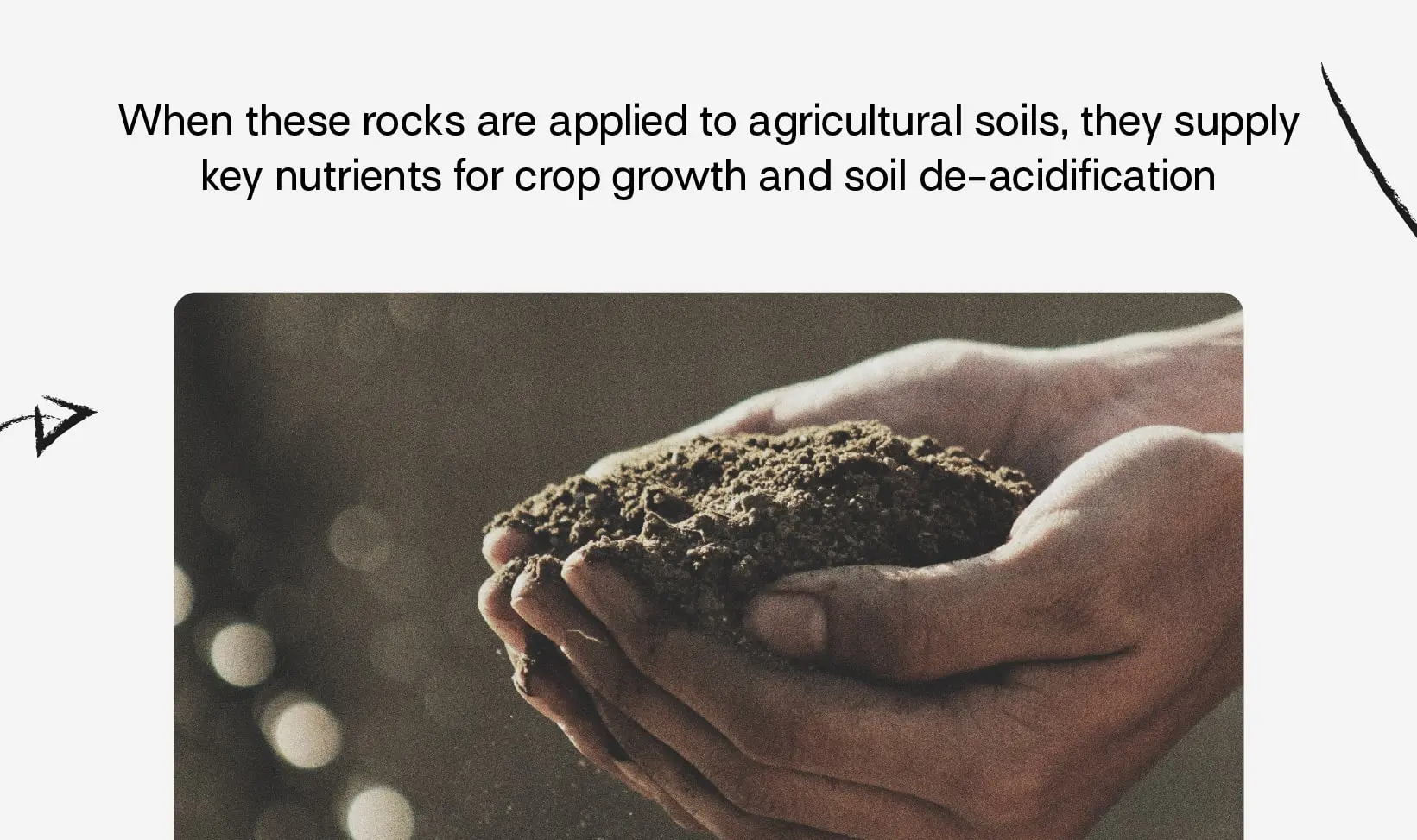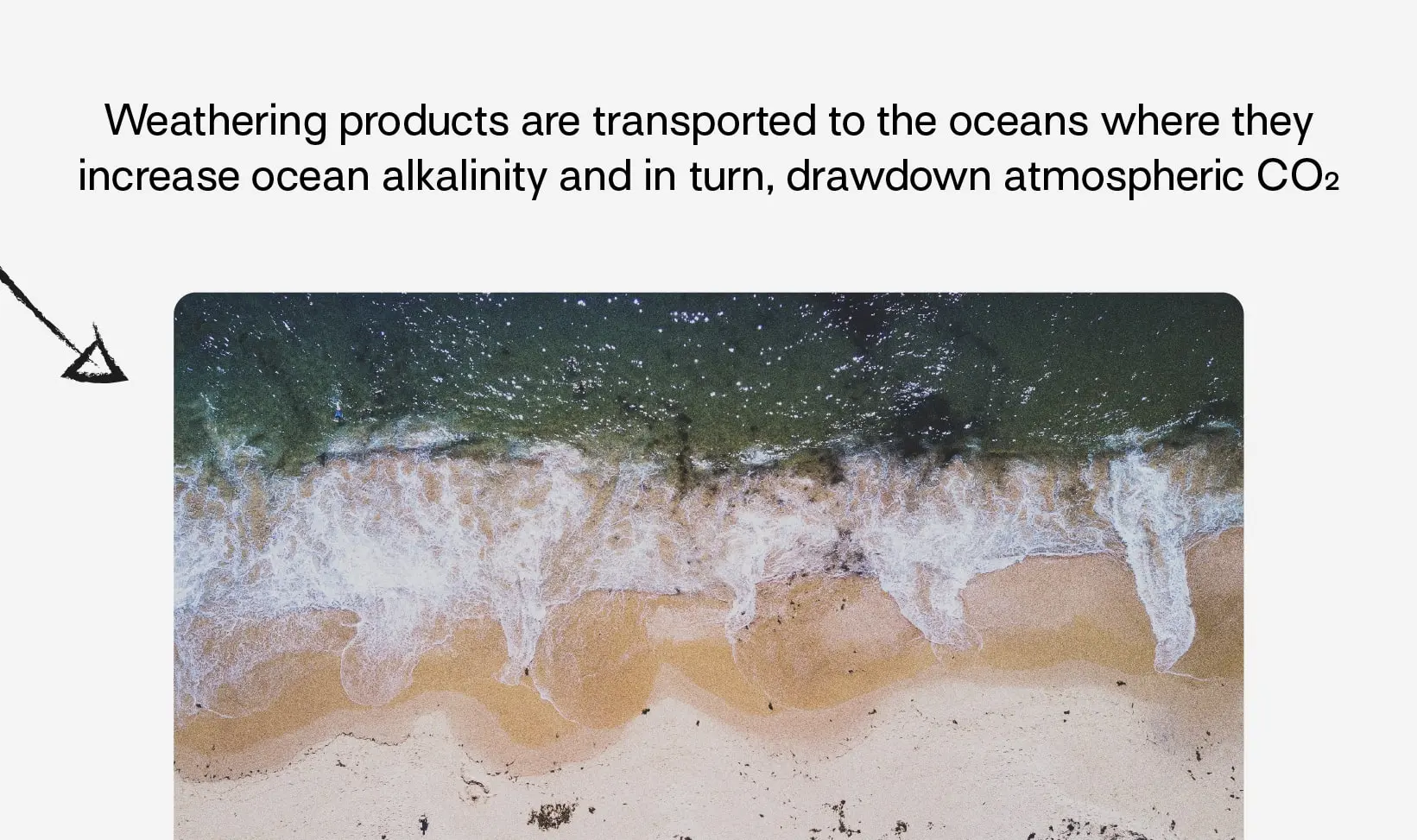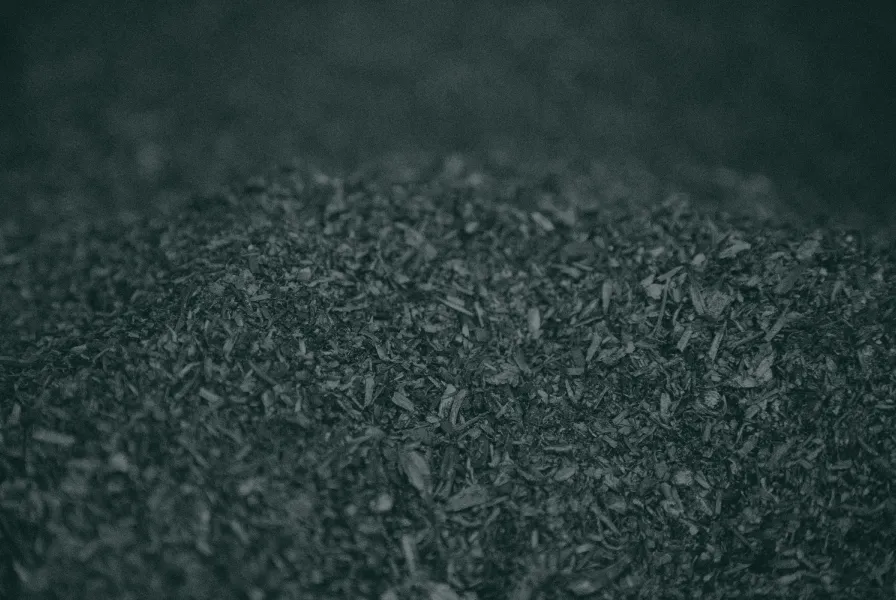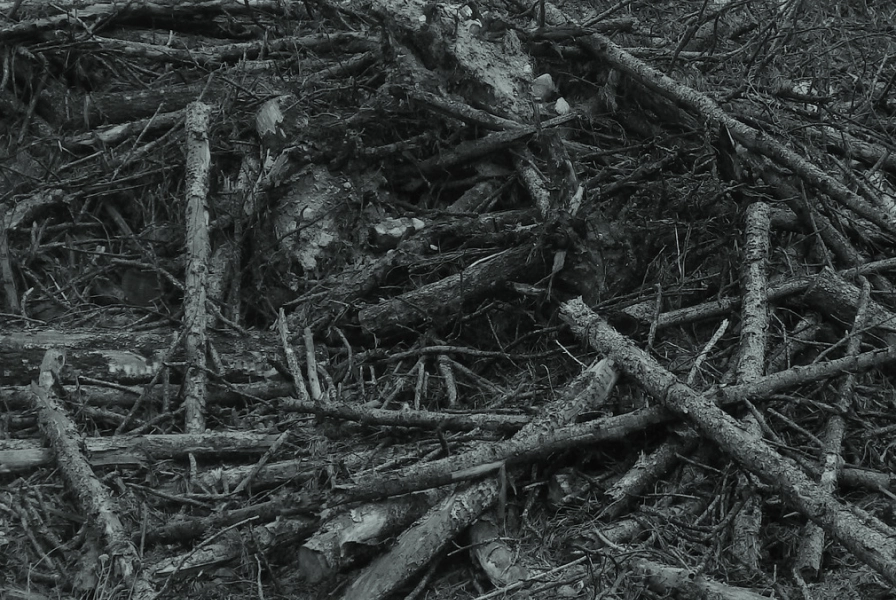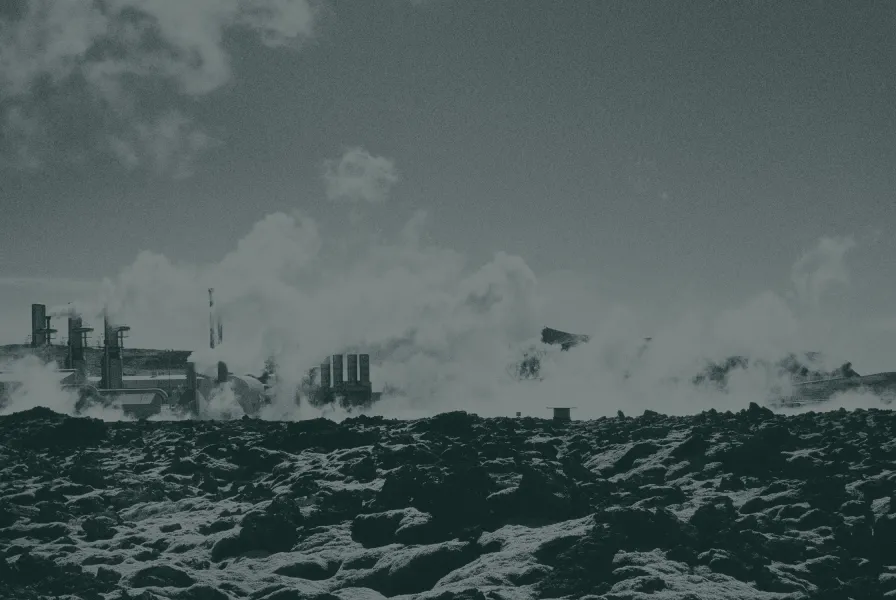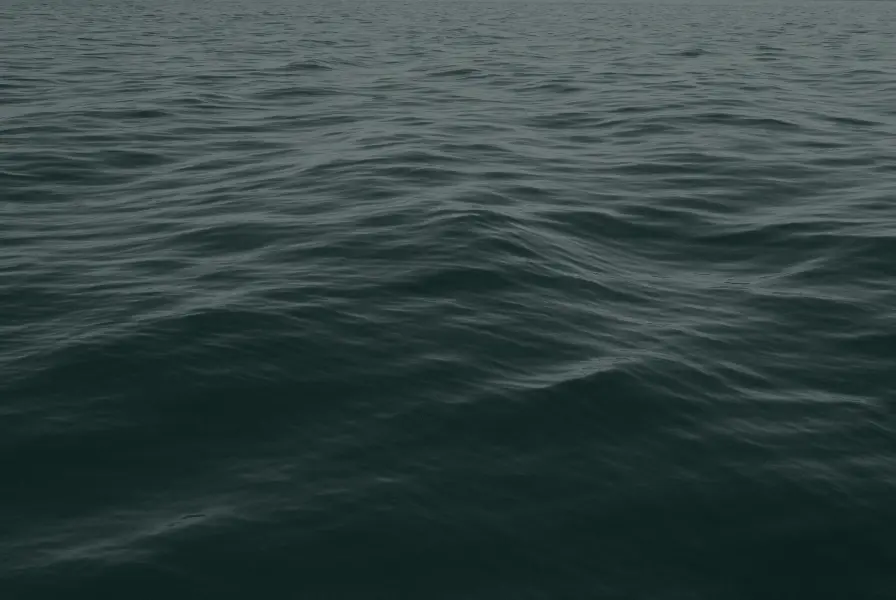Overview
Enhanced rock weathering (ERW) takes natural weathering of silicate rocks that removes & mineralizes atmospheric CO₂ and speeds it up dramatically. It does so by spreading crushed silicate rocks, making the reactive surface area much larger.
During this process, CO₂ in the atmosphere and soils is converted to dissolved bicarbonate ions. These ions can then react with other minerals to form rocks, or get transported to the ocean where they remain stable for >1000 years.
When rocks are applied to agricultural soils, ERW has a number of co-benefits such as supplying key nutrients for crop growth and the de-acidification of soils and the oceans. Appropriate rock sources are generally abundant worldwide and the barriers to scaling this technology are low.

